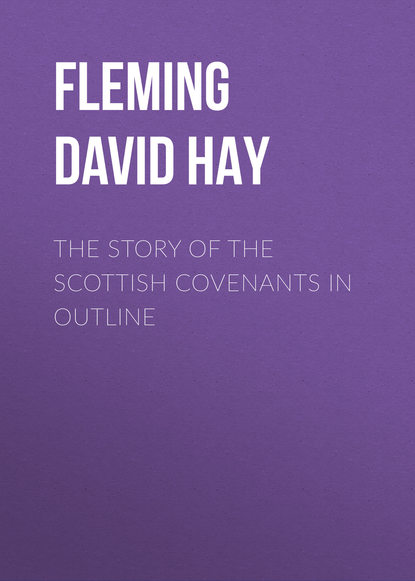По всем вопросам обращайтесь на: info@litportal.ru
(©) 2003-2024.
✖
The Story of the Scottish Covenants in Outline
Настройки чтения
Размер шрифта
Высота строк
Поля
The dreadful massacre of the Huguenots, begun in Paris on St Bartholomew’s day 1572, excited consternation and horror in Scotland. Believing that all the other Protestants in Europe were to be similarly dealt with, the Privy Council summoned a convention, to be held at Edinburgh on the 20th of October, to consider the impending danger and the means by which it might be averted. Unfortunately for the success of the convention, the lieges had been summoned to meet at Jedburgh on the 22nd to make a raid upon the border thieves; and the Earl of Mar, then Regent, was drawing near his end at Stirling. None of the nobles and few of the lairds attended the convention; but a number of proposals were agreed to, that they might be sent to the Regent and the Privy Council. One of these proposals was that a public humiliation, or fast, should be held throughout the whole of Scotland during the last eight days of November. Another was that the Protestants of the realm should enter into a solemn band, that they might be ready on all occasions to resist the enemy. There is evidence to show that the fast was observed in Edinburgh; but, if the band was ever drawn up, no copy of it seems to have survived, nor any record of its having been entered into. The suggestion, however, was not fruitless. In the following January, Parliament enacted that no one should be reputed a loyal subject to the King, but should be punished as a rebel, who did not profess the true religion; and that those who had made profession thereof, and yet had departed from their due obedience to his Majesty, should not be received to his mercy and favour, until they anew gave confession of their faith; and promised to continue “in the confessioun of the trew religioun” in time coming, and to maintain the King’s authority; and also that they would, “at the uttermest of thair power, fortifie, assist and mantene the trew preichouris and professouris of Christis religioun,” against all enemies and gainstanders of the same, of whatever nation, estate, or degree, who had bound themselves, or assisted, to set forward and execute the cruel decrees of the Council of Trent, injuriously called, by the adversaries of God’s truth, “The Haly League.” By this time the “Tulchan Bishops” had been obtruded on the Church of Scotland.
The King’s Confession
All the earlier covenants were eclipsed in interest and importance by the one drawn up by John Craig, and commonly called “The King’s Confession,” sometimes “The Second Confession of Faith,” and sometimes “The Negative Confession.” In it the corruptions of the Papacy are denounced and renounced in terse language and with refreshing vigour. As John Row puts it: “This wes the touch-stone to try and discern Papists from Protestants.” And yet, notwithstanding its searching and solemn words, it failed in at least one notable instance as a touch-stone. The original document, signed by James the Sixth and his household on the 28th of January 1580-81, found its way to France, but fortunately was sent back again to this country – to Scot of Scotstarvit – and is now in the Advocates’ Library. This covenant was subscribed in 1581 by all ranks and classes of the people.





